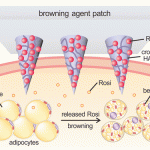 Computer-aided design commonly known as CAD, is used to create accurate drawings or technical illustrations in 2-D or 3-D models. Commercial CAD software can be challenging to work with like any sophisticated programming languages and tools. Well the smart folks at MIT Computer Science and Artificial Intelligence Laboratory (CSAIL) and Columbia University, recognized this issue with CAD and did something about it.
Computer-aided design commonly known as CAD, is used to create accurate drawings or technical illustrations in 2-D or 3-D models. Commercial CAD software can be challenging to work with like any sophisticated programming languages and tools. Well the smart folks at MIT Computer Science and Artificial Intelligence Laboratory (CSAIL) and Columbia University, recognized this issue with CAD and did something about it.
In a new paper entitled “Interactive Design Space Exploration and Optimization for CAD Models,” they’ve announced the development of a productivity tool called InstantCAD, that is implemented as a plug-in to seamlessly integrate with existing CAD programs. This means InstantCAD runs in the existing CAD environment removing big learning curves, while offering an intuitive streamlined workflow that lets designers interactively improve, and optimize existing CAD models.
One of the most important features of CAD that also can make it hard to maintain is parametric modeling where attributes are intertwined automatically. In other words with parametric modeling, the designer could have 3 parameters that are interlinked. If the designer needed to modify one parameter; the other two parameters get adjusted automatically. Maintenance can be tedious because if for example, you need to adjust one parameter not relative to the others (redefining the interconnection between them) in a defined object the number of possible design options is potentially overwhelming. And after each change it becomes an iterative loop of; regenerating the new design, running simulations, analyzing the result, and likely making more adjustments.
InstantCAD, offers two modes for improving and optimizing the design in real-time, saving the programmer performing maintenance days or even weeks. A user interface called “interactive exploration” offers real-time response on how design changes will affect performance. Or you simply tell InstantCAD to give you a design with specific characteristics and the “automatic optimization” feature calculates how it affects the other parameters. For example, you could specify in the “automatic optimization” mode to make a plane as lightweight as possible given that it still needs to able to carry a certain maximum amount of weight.
Lead author Adriana Schulz a Computer Science PhD student, who will be presenting the paper at this month’s SIGGRAPH computer-graphics conference in Los Angeles opinioned: “We think this could be a real game changer for automakers and other companies that want to be able to test and improve complex designs in a matter of seconds to minutes, instead of hours to days.”
The paper was co-written by Associate Professor Wojciech Matusik, PhD student Jie Xu, and postdoc Bo Zhu of CSAIL, as well as Associate Professor Eitan Grinspun and Assistant Professor Changxi Zheng of Columbia University.
More information: Paper: “Interactive Design Space Exploration and Optimization for CAD Models” people.csail.mit.edu/aschulz/optCAD/a11-schulz.pdf









